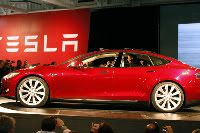Comparing the Environmental Impact of Conventional Vehicles, Hybrids, and Plug-ins
Thanks to longtime reader Roberto DePaschoal for alerting me to this recent white paper from the Department of Engineering and Public Policy and the Department of Civil and Environmental Engineering, at Carnegie Mellon University, comparing the environmental impact of conventional vehicles with hybrids and plug-in vehicles. The study considers the entire lifecycle, from extraction of the raw materials, construction, operation, and decommissioning.
I know there are going to be nay-sayers who quibble about certain aspects of the methodology, but it looks pretty thorough and fair-minded to me. And let me point out, as I always do, that the case to be made for electric transportation can only improve as time goes on, as oil becomes scarcer and harder to extract, and as the integration of renewable energy into the grid-mix continues to expand. Then, of course, there are ancillary benefits as the EV population grows, including vehicle-to-grid (V2G).


I am a Contractor, educated, but simple in my assessment of info. Could someone summarize the results for me? I think the results show cleaner GHG, but shorter life? the question is the shorter life equates to ?
Greg Chick. Analog please.
It is not quibbling when the assumptions for the calculations are off by >50%!
The findings of this white paper show that HEV’s have a 5% greater CO2E emission than PHEV-90’s. But that assumes a life-cycle grid emissions profile of 615 g-CO2E/kWh. That is blatant BS.
The impact of new marginal electricity demand (as represented by shifting transportation demand from liquid fuel to electricity) can only be satisfied by spare generating capacity. There is no renewable spare capacity in most of the country, and in the places where there is spare capacity (TX, IA, MN, ND, IL…) there is no benefit to be ad from a constant 8+ hour nighttime demand increase, as the spare renewable capacity in these cases is curtailed wind, and the constant 8+ hour nighttime demand would be satisfied by not tamping down baseload power as much each night.
So this new demand must be assumed to be met with 100% fossil energy – not “average grid energy”. The average CO2 emissions from current fossil sources on the grid is ~875 g-CO2/kWh… that’s before upstream emissions are considered, and before methane emissions from wellhead and distribution leaks are considered. A more reasonable estimate should be ~1000 g-CO2E/kWh.
That isn’t quibbling. That’s pointing out a major error that completely invalidates the finding of the study.
Quibbling would be pointing out minor errors – such as the fact that no allowances for battery leakage, battery coolant, battery heating in cold weather, or other losses associated with batteries were factored in… Also not considered were issues with the EPA assessment of kWh/km fuel economy – and they don’t factor in the energy required for heating the passenger volume.
Craig,
As always, I respect your work and respect your advocacy. We MUST transition to a cleaner energy profile, and I believe you are contributing to that effort. But you should not brush off criticism of EV’s, or criticism of a flawed analysis of EV’s, as “quibbling”.